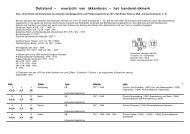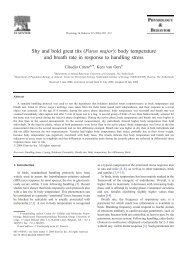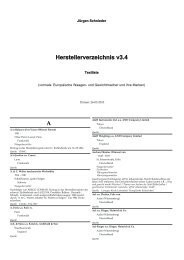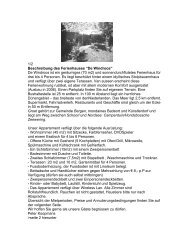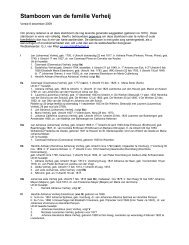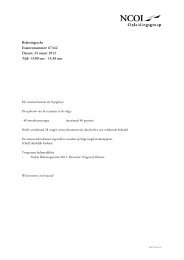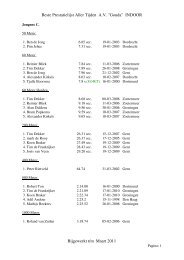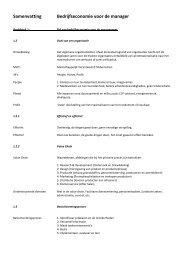Kth - sdr - kit
Kth - sdr - kit
Kth - sdr - kit
Create successful ePaper yourself
Turn your PDF publications into a flip-book with our unique Google optimized e-Paper software.
6/13/2010 KTH - SDR - KIT Page 11<br />
________________________________________________________________________________<br />
2.3 Assembling and testing the Synthesizer module.<br />
See the schematic on figure 2.3-1. The frequency generation is accomplished by the Si570 clock generator<br />
made by Silicon Labs and covers 3.5 MHz to 440 MHz. Controlling of the complete receiver is done by a<br />
Microchip PIC 18F2550. This microcontroller generates I2C data for most of the modules and communicates<br />
via USB with the host computer. Most of the I/O ports are available on block headers or card edge<br />
connectors. For initial PIC programming, an ICSP connector is available on the board. Firmware upgrades<br />
are carried out through the USB port after setting the PIC in ‘Bootload’ mode. There are two LED’s on the<br />
board: one as a power indicator and the other one for indicating that the PIC is in Bootload mode.<br />
The 5 Volt power supply can be obtained (set by jumper J1) from the USB port (only for testing the USB<br />
connection) or from voltage regulator VR1 for normal use. Because the Si570 needs only 3.3 Volt, there is<br />
also a 3.3 Volt regulator on the board. To adjust the 5 Volt I2C levels from the PIC to the 3.3 Volt level of<br />
the Si570, a bidirectional voltage translator interface IC2 is used.<br />
The balanced RF output of the Si570 is adjusted by TR1 to the 50 ohm impedance of the MAV-11 to get for<br />
the I/Q demodulator LT5517 a stable and strong signal.<br />
Frequency tuning of the Si570 can be done via USB commands or the 24 pulse per revolution encoder as<br />
well.<br />
Pull-up resistors are necessary for the function push buttons connected to the RA-ports. You can place these<br />
resistors near the buttons on the LCD board, or you can use a resistor array (R17 – not in <strong>kit</strong>) on the<br />
Synthesizer board.<br />
In figure 2.3-2 en 2.3-3 you will see the location of the components.<br />
Install the components as follows:<br />
Solder first R3 before the DIL28 IC-socket will be placed. Next, on the backside, solder the 3.3 Volt<br />
regulator VR2 en the components: D2, C19, C17, C14, C15, L2, C10, C11 and C9. VR2 takes care of the 3.3<br />
Volt supply of the Si570 and GTL2002. Check if the code stamps on VR2 is N05B.<br />
Solder the 5 Volt regulator VR1 on the board and next the components C5, C6 and C7. VR1 takes care of the<br />
5.0 Volt supply of the PIC and also the LCD board. Check if the code stamps on VR1 is N06B.<br />
Now the regulators and accompanying parts are in place, you can put the module in the motherboard<br />
connector and connect the 12 Volt DC to the motherboard.<br />
Caution: When you place a module in the motherboard connector, be sure the<br />
module is in the corresponding connector and in the right way. Be sure the<br />
module connector pin 1 and 2 and the Motherboard connector pin 1 and 2 are<br />
in the same position! If you place a module in the wrong way, it can be<br />
irreparable damaged!<br />
Tip: Use a 12 Volt external power supply with a 1 Amp (max) fuse and or use a<br />
series resistor of about 10 ohm 5 Watt in the DC line for sure.<br />
Check the 5 Volt and 3.3 Volt on the test points on the Synthesizer board.<br />
If all the supply voltages are OK, then you can continue with the rest of the components.<br />
Note: CUT-B and connection A is only applicable if you are using the CMOS version of the Si570 and not<br />
the provided Si570 LVDS.<br />
___________________________________________________________________________________________________________<br />
Instruction manual KH-SDR wideband receiver Kit No-1021. All rights reserved KTH-SDR-KIT. Software design by PA0RWE.





